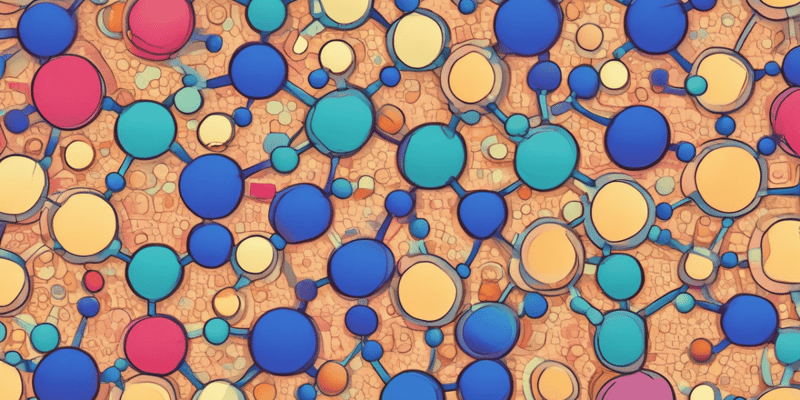10 Questions
Which of the following is a common property of lipids?
Insolubility in both water and nonpolar solvents
What is the main function of lipids as thermal insulators?
Trapping air to maintain body temperature
Which of the following is NOT a function of lipids?
Facilitate rapid energy release in the body
What do combinations of lipid and protein (lipoproteins) mainly serve as in the body?
Transporters of lipids in the blood
Which of the following diseases is associated with abnormal chemistry or metabolism of lipids?
Obesity
Which of the following is an example of a compound lipid?
Phospholipids
What is the general formula for saturated fatty acids?
CnH2n+1COOH
Which type of fatty acids contain no double bonds?
Saturated fatty acids
What is the main characteristic of small chain fatty acids?
2-4 carbons
Which lipid molecule is derived from simple/compound lipids on their hydrolysis?
Bile acids
Study Notes
Common Properties of Lipids
- Lipids are hydrophobic or amphipathic, meaning they repel water or can have both hydrophilic and hydrophobic parts.
- They are generally insoluble in water but soluble in organic solvents.
Main Function as Thermal Insulators
- Lipids provide insulation by trapping heat, helping to maintain body temperature in cold environments.
- They reduce heat loss through the skin by acting as a barrier.
Functions NOT Associated with Lipids
- Structural support is primarily a function of proteins, while lipids are mainly involved in energy storage, insulation, and signaling.
Role of Lipoproteins
- Lipoproteins are complexes of lipids and proteins that transport lipids through the bloodstream.
- They play a critical role in lipid metabolism and distribution throughout the body.
Diseases Linked to Lipid Metabolism
- Disorders such as hyperlipidemia or atherosclerosis are linked to abnormal lipid chemistry and metabolism.
- These conditions can lead to cardiovascular diseases due to high levels of lipids in the blood.
Example of a Compound Lipid
- Phospholipids are a common example of compound lipids, contributing to cell membrane structure and function.
General Formula for Saturated Fatty Acids
- Saturated fatty acids typically follow the formula CnH(2n+1)COOH, where n is the number of carbon atoms.
Fatty Acids with No Double Bonds
- Saturated fatty acids contain no double bonds between carbon atoms, resulting in a fully saturated structure with hydrogen.
Characteristic of Small Chain Fatty Acids
- Small chain fatty acids (typically fewer than six carbon atoms) are more soluble in water due to their shorter hydrocarbon chain.
Lipid Molecules from Hydrolysis
- Glycerol can be derived from the hydrolysis of simple and compound lipids.
Learn about the diverse compounds that make up lipids, such as fats, oils, steroids, and waxes. Understand their physical and chemical properties, as well as their functions as a storage form of energy and their role in cell membranes.
Make Your Own Quizzes and Flashcards
Convert your notes into interactive study material.



